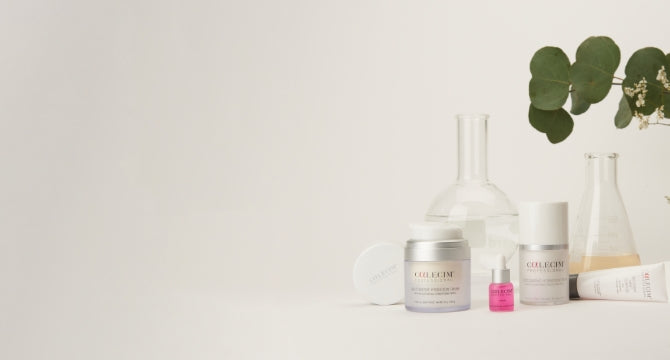How to Erase Acne Scars
Find out what causes acne scarring so you can stop it before it happens, says Adrian Baker of Lumiere MediSpa
Find out what causes acne scarring so you can stop it before it happens, says Adrian Baker of Lumiere MediSpa
What is acne?
Acne is a common skin condition that affects some 650 million people worldwide, with 95% experiencing it during adolescence. It occurs when hair follicles in our skin become blocked by a mixture of sebum (oil) and skin debris, such as dead skin cells.
This blockage can appear as a blackhead or whitehead. These can attract bacteria and become infected, leading to inflammation and pus, which is formed when white blood cells try to attack the bacteria. Left untreated, the swelling and inflammation can damage the surrounding skin cells, leading to the formation of deeper cysts and scarring.
Acne is diagnosed if blackheads and blocked pores are present.
When do we experience acne?
Acne can form during any stage of life but it’s commonly associated with adolescence and the teenage years. This is because adolescence is typically associated with hormonal imbalances, which result in skin shedding less effectively and increased sebum production.
Unfortunately, acne isn’t exclusive to teenagers as our hormones can change later in life. It has been reported that 12-14% of acne cases will continue into adulthood, resulting in the much-dreaded adult acne. Acne severity is also a concern. 20-35% will develop moderate to severe acne that can potentially cause permanent scarring, which can in turn lead to considerable physical and psychological distress, especially in adolescents. It’s therefore essential that effective acne treatments be implemented early on, before the onset of scarring.
Do men and women experience acne differently?
Yes. Women’s hormones fluctuate due to their menstrual cycles, which can result in acne outbreaks of varying severity. Men tend to experience a more ‘consistent’ type of acne formation.
Which skin types are more prone to acne?
It’s true oilier skins are more acne-prone but other skin types can also be susceptible to acne. Even a person with dry skin can experience acne, despite their skin producing only a small amount of oil. Dry, dead skin cells can become trapped within pores, creating a blockage that leads to acne.
Where does acne commonly occur?
Any part of the skin with sebaceous follicles (oil-producing skin pores) can experience acne. It’s most commonly seen on the face – particularly the lower face – and can also appear on the neck, chest and back. Some people even experience acne on other parts of their body, such as their upper legs, groin and buttocks.
Which are the most effective acne treatments?
The key to acne treatment success lies in ensuring that skin cells can shed regularly and effectively, so they don’t become trapped in the first place. If oil can flow freely, the only potential issue is that one might have shiny, oily skin, which can actually be a good thing when it comes to skin health and ageing skin!
Retinoid products (both prescription and over-the-counter) are an effective topical treatment that helps skin cells to shed effectively and prevent new lesions from forming. Topical salicylic acid treatments are also very effective because they can penetrate oil and dissolve build-ups directly within skin follicles. Salicylic acid is also a natural anti-inflammatory.
While these products are available online, using them typically won’t make acne disappear, unfortunately. For many people, keeping acne at bay requires lifelong management of their skin’s particular requirements. To stay healthy and acne-free, our skin barrier should be kept intact, with minimal inflammation and with a good balance of good and bad bacteria.
This means that people with acne typically need a variety of products to care for their skin in its entirety, not just on a particular spot. As such, it’s important to consult a medical professional who’s trained in dealing with the skin condition, so that they can tailor an effective treatment regime that caters to each patient’s specific needs.
How we treated a patient with adult acne
The Patient
Sarah*, 24, had suffered with acne since adolescence and had approached us hoping to finally find a solution for her skin condition. She had open and closed comedones, papules and pustules, which meant her acne was of “moderate” severity. While Sarah had sought acne treatment in the past, she still had acneic lesions on her cheeks and forehead. She also had scarring from previous lesions.
It was important to treat Sarah’s active acne and stop new lesions from forming before proceeding to scar treatments. We were also mindful that Sarah preferred to explore non-antibiotic options as she had previously found both topical and systemic antibiotics not particularly effective.
The Treatment
Sarah’s initial treatment comprised of topical treatments including 1% retinol and 2% salicylic acid, a gentle gel cleanser and mineral UV protection. Her skin visibly improved over 12 weeks of this regime. Following this, we started scar treatment. First, we used an enzyme peel to prepare her skin for better absorption, then applied a topical anaesthetic cream for comfort. We then used microneedling, during which we applied CALECIM® Professional Serum throughout the procedure. Finally, we used LED light therapy, which has antibacterial and wound healing benefits. We also instructed Sarah to apply another bottle of CALECIM® Professional Serum to aid her skin’s healing over the next 24 hours. We repeated the entire treatment twice, with each treatment spaced six weeks apart.
The Result
Sarah was delighted with the results as her scars healed almost completely by the end of her treatment. She also experienced no complications, apart from some skin dryness and flakiness that resolved within a week.
*Patient’s name has been changed for privacy.































